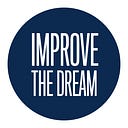How is it possible for someone who grows up in the U.S. with a documented status to not have a clear path to citizenship?
Pareen Mhatre & Niranjana Save
While we welcome everyone to read this, this post is intended for those who are unfamiliar with the U.S. immigration system, its laws, and how it affects the group commonly known as “Documented Dreamers.”
The legal immigration system of the United States is one of the most complex immigration systems in the world. It’s simple to ask “why can’t they just get in line and apply for citizenship?” but the issue itself lies in the intricacies of the immigration process. While it is impossible to explain the entire legal immigration system in one post, it is crucial to understand one of the sources of the complexities behind immigrating to the U.S.
Let’s start by breaking down the distribution of green cards.
Every year, the United States issues a total of 1 million green cards (Migration Policy Institute, 2019). That sounds like a big number, doesn’t it? However, around 860,000 out of those are reserved for categories such as family-based immigration and refugee status, leaving the remaining for employment-based immigration. 140,000 still seems like a significant amount of employment-based green cards, until you realize that each country can only get up to 7% of those remaining 140,000. This leaves each country with 9,800 green cards from the U.S.
So how does this affect nations with more applicants than the 9,800 available green cards allocated to their country?
Let’s take India as an example.
In order to apply for permanent residency under the employment-based system, an applicant must reside in the U.S. on a work visa (H1-B, L-1, L-2, etc.) and have their employer agree to sponsor and file their green card. Every year, hundreds of thousands of Indian nationals who are on work visas apply for permanent residency in the U.S. Given the 9,800 green cards available per year for these Indian nationals, there is an overwhelming number of applicants than there are green cards available, which creates a bottleneck effect. This is known as the green card backlog.
Within the employment-based system, there are priority groups for applicants. According to David Bier from the Cato Institute, the priority groups are defined as:
- EB-1: Multinational executives, internationally-acclaimed professors, scientists, athletes, artists, businesspeople
- EB-2/EB-3: High-skilled workers who have advanced degrees in their field
- EB-4: Religious workers, abandoned juveniles, U.S. government and military employees
- EB-5: Foreign investors
The processing time for each employment-based category varies. EB-1 takes roughly eight years, while EB-2/EB-3 has been calculated to take more than 89 years (Cato Institute, 2020). This is more than the average human lifespan.
In other words, the backlog mostly affects Indian applicants within the EB-2/EB-3 category.
Children of long-term visa holders, also known as Documented Dreamers, within the aforementioned categories, who entered the country on a dependent visa status (under age 21) are among those affected by the backlog. Despite having spent most of their lives in the U.S., these children, under their dependent visa status, face many hurdles ranging from having no work authorization to being disqualified from a majority of scholarships and federal aid for their college educations.
However, the biggest hurdle for these Documented Dreamers is turning 21, also known as “aging out of the system.” These children are no longer on a dependent-visa status. At this point, they face two options: 1) self-deportation, or 2) start their own immigration journey all over again. And so the cycle continues. Documented Dreamers will eventually go through the same struggles as their parents and the line for green cards will only get longer.
Other flaws in our immigration system also result in additional Documented Dreamers because some long-term visas (such as the E2 small business investor visa) do not lead to a green card. All of these Documented Dreamers must be included in pathways to citizenship proposed for other Dreamers. Moreover, Congress needs to create a mechanism to permanently protect children who grow up here from aging out of the system. Finally, the root causes of Documented Dreamers’ plight must also be addressed by solving the green card backlog and increasing pathways to citizenship for long-term visa holders.
Unless the outdated immigration laws are revised, these children who are American in every sense, except on paper, will have to give up their American Dream that their families have worked so hard to fulfill.
Improve The Dream is a youth-led advocacy organization bringing awareness for over 200,000 children of long-term visa holders who face self-deportation, despite growing up in the United States with a documented status.
If you know someone who is a Documented Dreamer, please share the following link so they can join our advocacy community to stay updated and connect with other Documented Dreamers: ImproveTheDream.org/survey.
*pre-pandemic data
